Cast iron skillets are cherished kitchen tools, known for their durability and ability to evenly distribute heat.
However, they require special care and consideration, particularly when it comes to what you cook in them. Missteps can lead to a compromised skillet, affecting the flavor of future dishes or damaging the pan itself.
This guide explores ten things you should avoid putting in a cast iron skillet to maintain its integrity and enhance your culinary adventures.
1. Tomato Sauce

A bubbling tomato sauce in a cast iron skillet might sound like a good idea for a delicious pasta night. However, the acidity in tomatoes can be harsh on the skillet’s seasoning, wearing it down over time. This can lead to the occasional metallic taste in your sauce, which is something nobody wants.
Acidic ingredients are best cooked in non-reactive pans. While an occasional exposure may not be catastrophic, frequent use with tomato-based dishes can strip away that hard-earned seasoning.
Opt for enameled cast iron instead, if your heart is set on cooking tomato sauces. They offer the same even heat distribution without the risk of damaging your pan.
2. Eggs
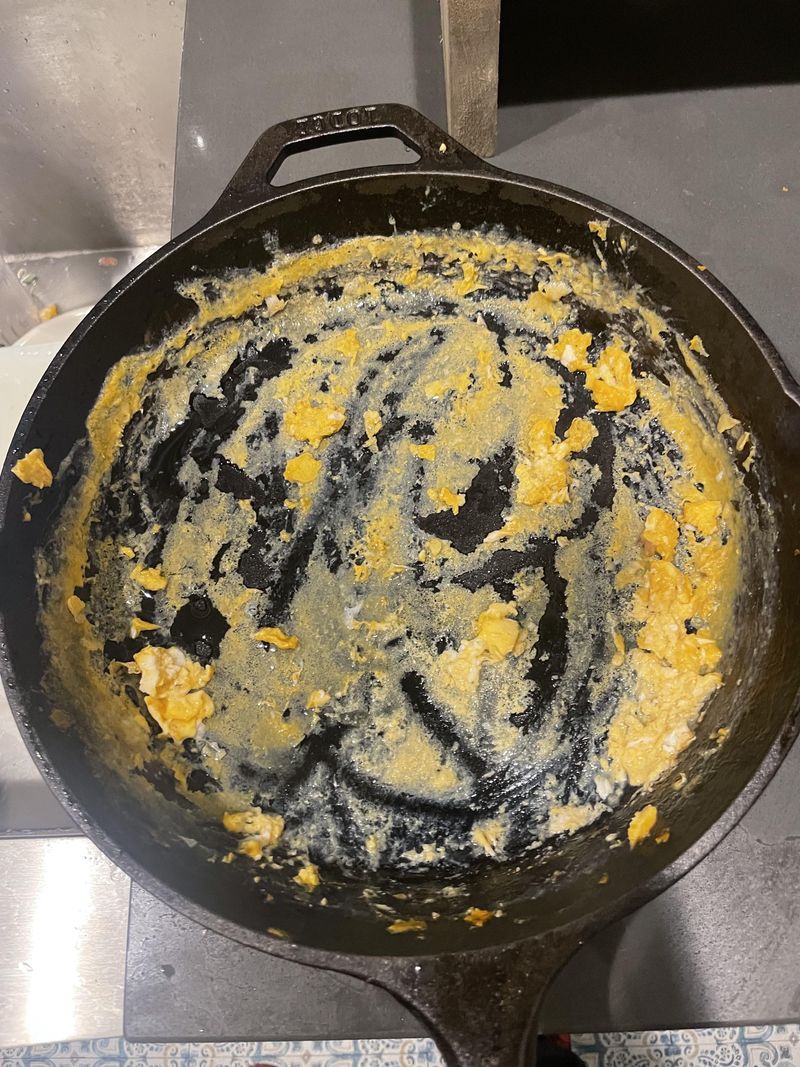
Frying eggs in a cast iron skillet can lead to disappointment, especially for beginners. Eggs, with their propensity to stick, can be a nightmare if the skillet isn’t perfectly seasoned. Your sunny-side-up dreams might turn into scrambled nightmares, leaving you with a sticky pan to clean.
It’s often better to use a non-stick skillet for egg frying. This ensures a smooth sliding action and a perfect breakfast.
If you choose cast iron, ensure your pan is well-seasoned and hot before using it with eggs. A little patience while the skillet heats can make all the difference.
3. Delicate Fish
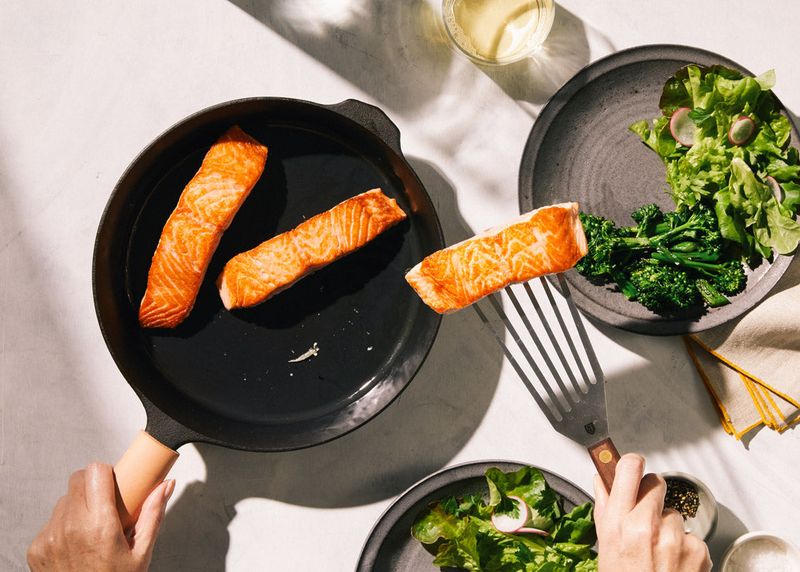
Cooking delicate fish like tilapia or sole demands a gentle touch, which cast iron skillets might not provide. These fish types can stick and break apart, leaving you with a frustrating mess.
The high heat retention of cast iron can overcook the fish edges before the center is done, ruining the perfect fillet.
If using cast iron, ensure plenty of oil and careful monitoring. Alternatively, non-stick pans offer a more forgiving cooking experience, ensuring that your fish remains intact and flavorful.
4. Garlic
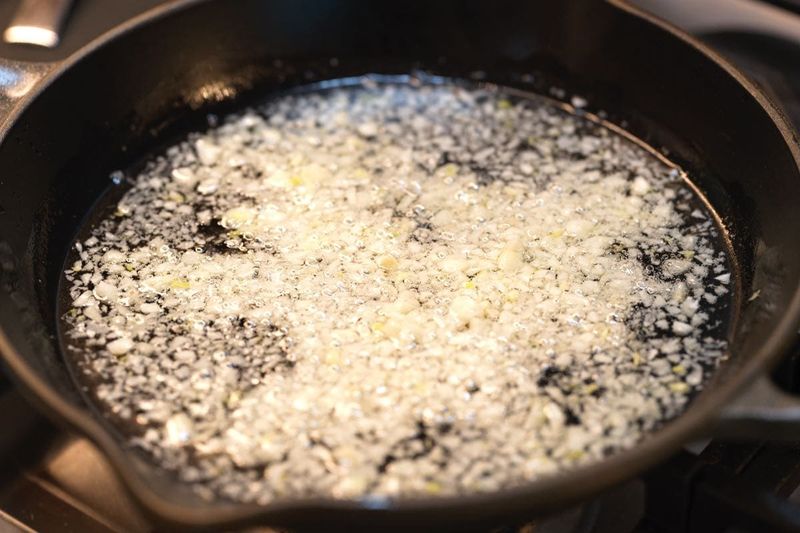
Garlic in a hot cast iron skillet can quickly turn from golden brown to bitterly burnt. The uneven heat distribution in some older cast iron skillets can make this a tricky task, even for experienced cooks.
Burnt garlic imparts an unpleasant flavor to the entire dish, overshadowing other ingredients. It’s a quick way to ruin a meal.
Use a medium heat and constant stirring to mitigate burning. Alternatively, add garlic towards the end of cooking, preserving its aromatic charm without the risk of bitterness.
5. Wine for Deglazing
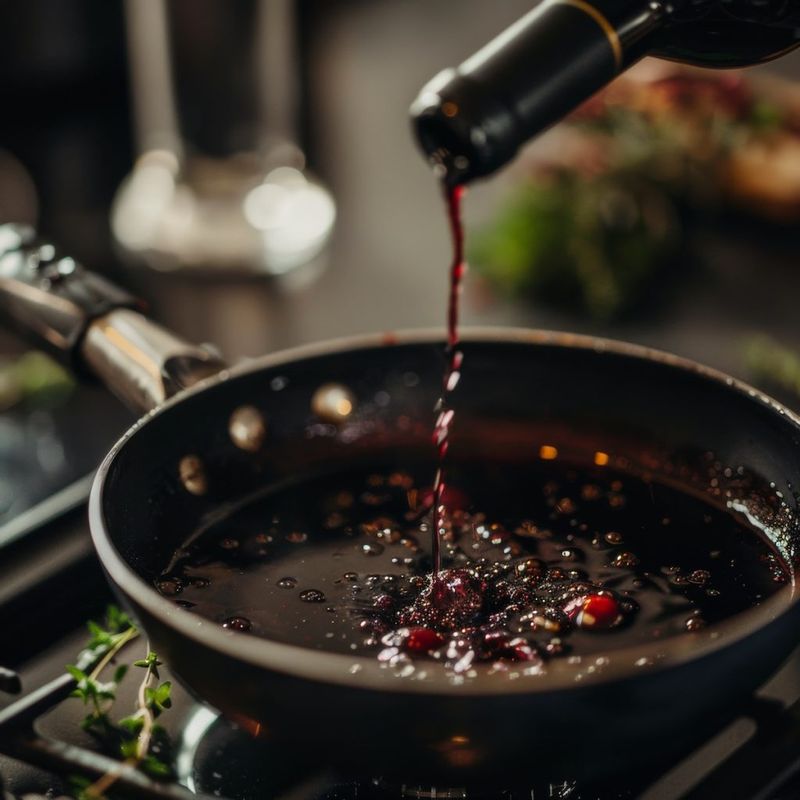
Using wine to deglaze a cast iron skillet can introduce unwanted flavors. The acidity in wine can undermine the seasoning, much like tomatoes. While it lifts the delicious fond from the pan, it can also lift seasoning layers, damaging the pan’s natural non-stick surface.
For deglazing, opt for stainless steel pans if you can. They withstand acidic ingredients better, preserving your cast iron for other tasks.
If you must deglaze with wine in cast iron, do it sparingly. Reducing the time wine stays in contact with the pan can help preserve its seasoning.
6. Sugary Sauces
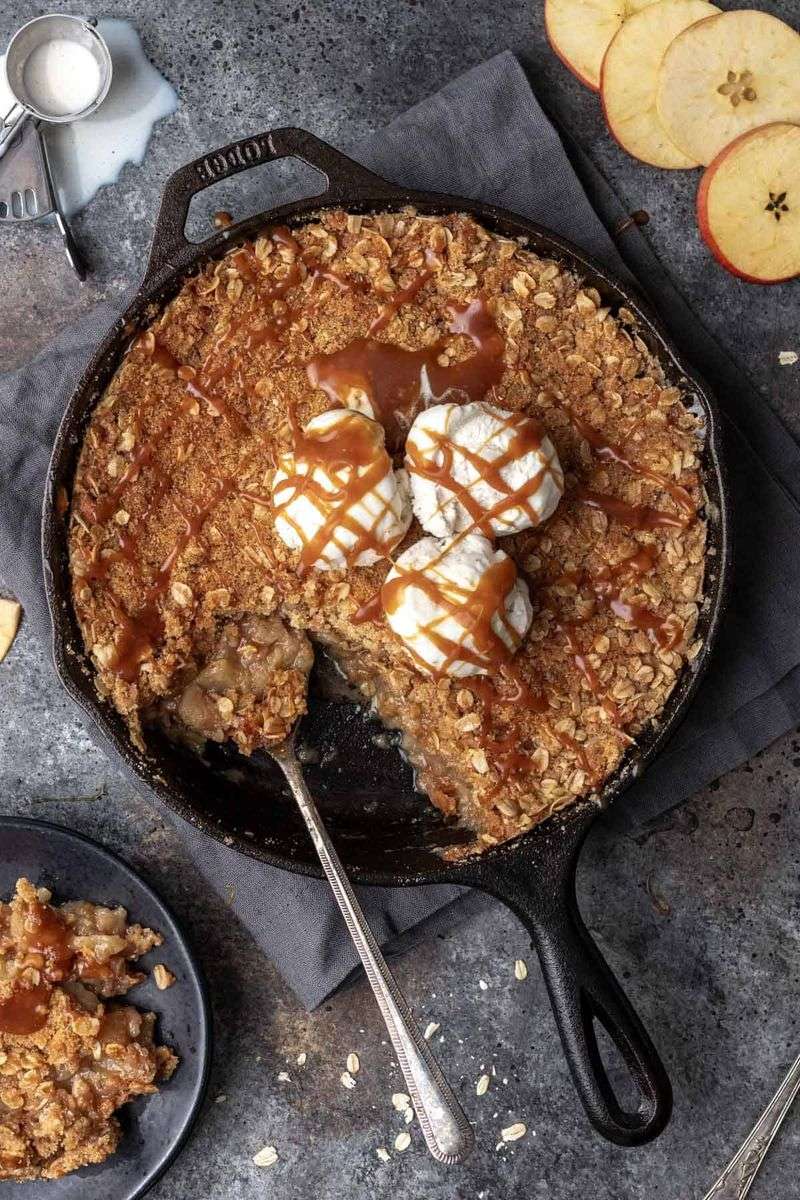
Making sugary sauces like caramel in cast iron can be a sticky situation. Sugar has a tendency to stick and burn, especially if the skillet isn’t perfectly seasoned. The high heat needed can exacerbate this issue, leaving you with a tough cleaning job.
These sauces are better suited for stainless steel or non-stick pans. They allow for easier stirring and prevent sugar from sticking.
If determined to use cast iron, ensure a well-seasoned skillet and constant stirring. However, be prepared for a challenging cleanup afterward.
7. Cheese
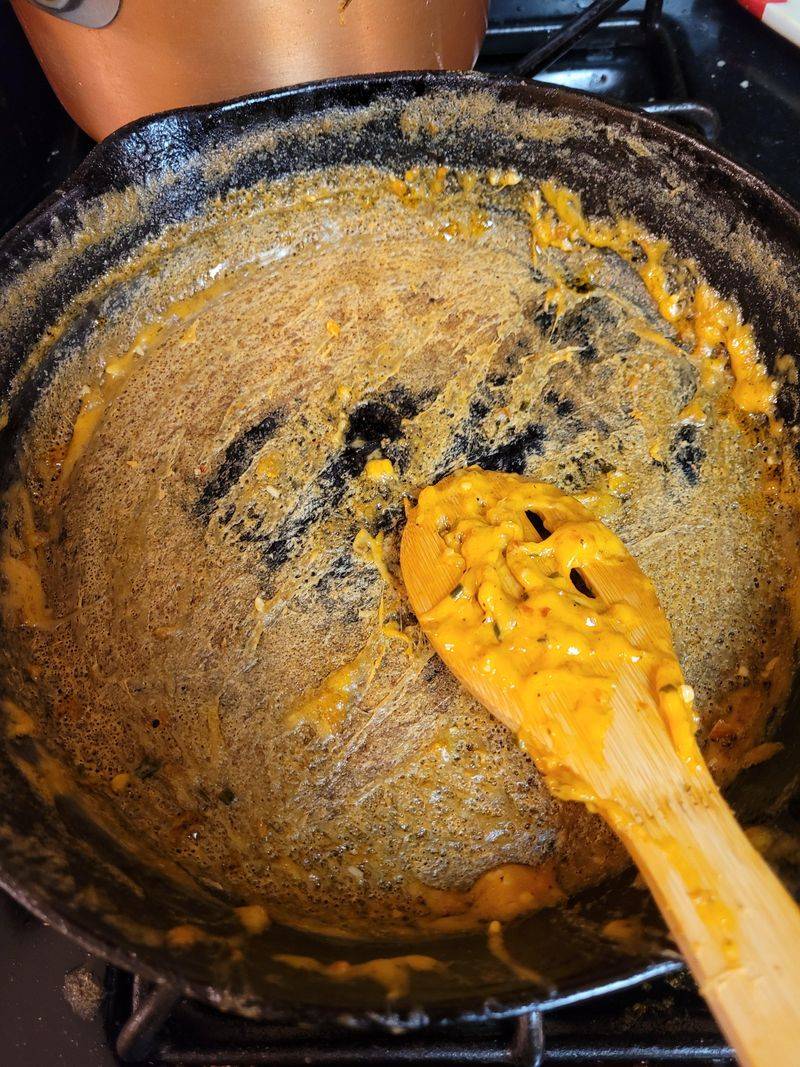
Melting cheese in a cast iron skillet can create a mess that’s difficult to clean. Cheese tends to stick and form a stubborn crust if the skillet isn’t adequately seasoned.
While it might seem tempting to make a grilled cheese, the cleanup might make you think twice. Cheese residue can also affect the flavor of anything cooked later in the pan.
Consider using a non-stick surface for cheesy dishes. If using cast iron, ensure it’s well-seasoned and use a spatula to prevent sticking.
8. Vinegar
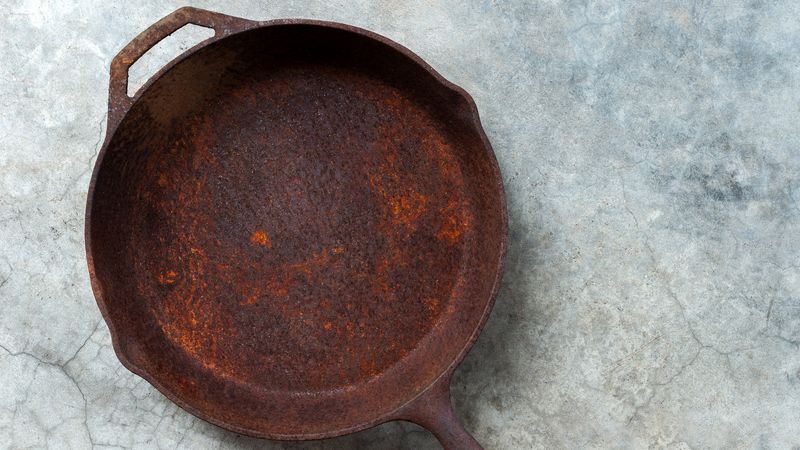
Vinegar and cast iron skillets aren’t the best of friends. The high acidity can strip the seasoning and lead to rust over time. This could compromise the skillet’s longevity and the taste of your dishes.
For cleaning or marinating, choose glass or stainless steel. They handle acidic ingredients without issue.
If vinegar must touch your cast iron, make sure to rinse promptly and re-season the pan as needed to protect its surface.
9. Cold Foods
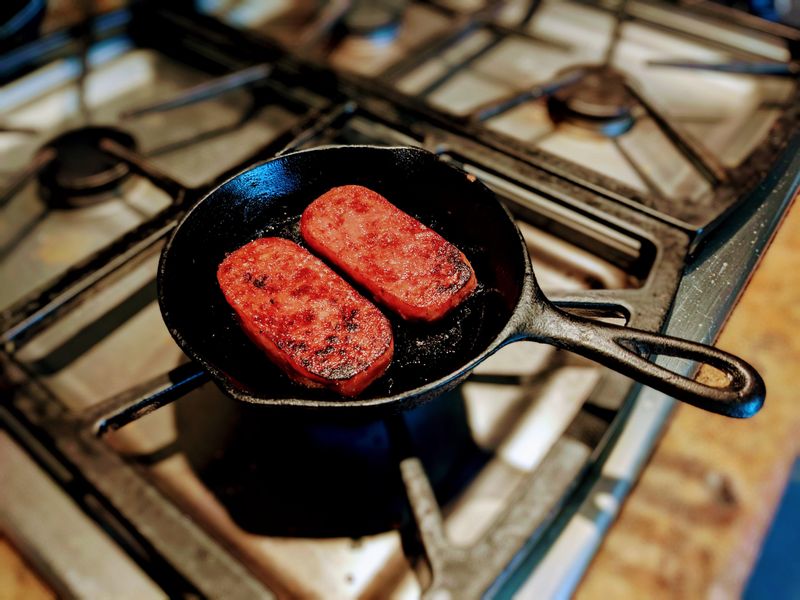
Placing cold foods in a hot cast iron skillet can cause the pan to crack due to thermal shock. This sudden temperature change is rough on the metal, potentially causing expensive damage.
Allow foods to reach room temperature before cooking. This helps ensure even cooking and prolongs the life of your skillet.
Keep your skillet’s temperature in mind. Gradual heating and cooling can prevent unnecessary wear and tear over time.
10. Soap
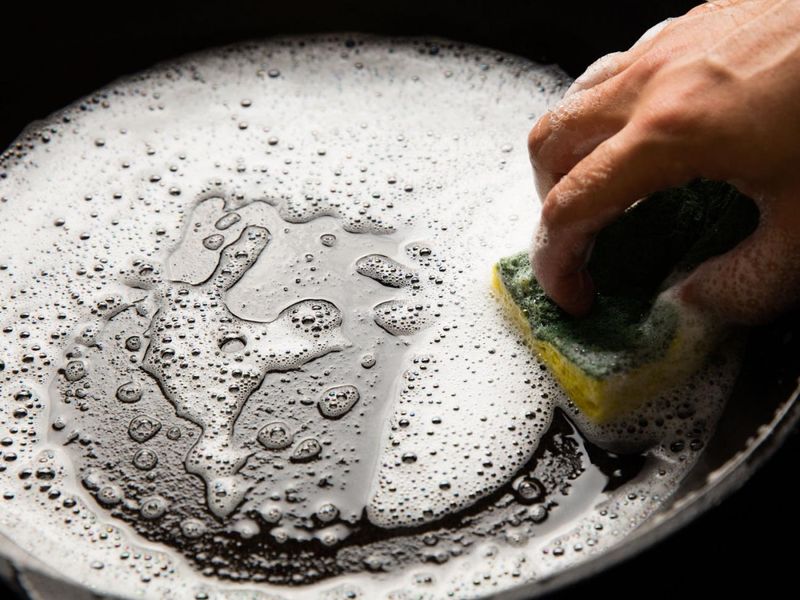
Using soap on a cast iron skillet can strip away the carefully built-up seasoning that provides its natural, non-stick surface. Many cast iron enthusiasts cringe at the idea, as soap can undo years of proper care.
A good scrub with hot water and a stiff brush is usually all you need. If deeper cleaning is necessary, a salt scrub works wonders.
Soap may seem like a logical choice for cleaning, but for cast iron, it’s best left on the shelf. Preserve that seasoning with gentler methods of maintenance.
Leave a comment